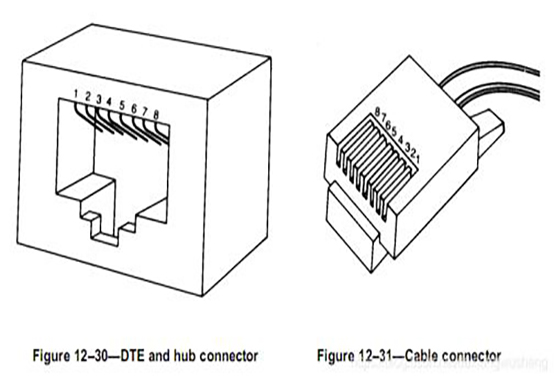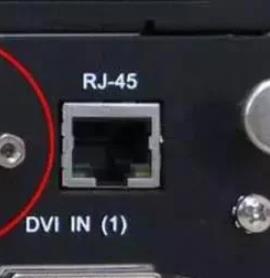As shown in the above figure, we can understand the appearance of RJ45 according to the picture, but not all RJ45 interfaces like the one in the above figure are RJ11 interfaces, which will not be discussed temporarily.
The switches are arranged side by side with multiple RJ45 ports, which can simultaneously transmit data between multiple ports, including one-to-one, one-to-two, and one-to-many. Each port does not affect its transmission rate. It can be regarded as a port on an independent physical network segment (but if the equipment on the same switch is required to be connected, ensure that the gateways belong to the same one), that is, the network equipment connected to it enjoys all the bandwidth independently, will not be affected by the transmission of other ports on the same switch, and has the isolation effect.
When node A sends data to node D, node B can send data to node C at the same time, and these two transmissions both enjoy the full bandwidth of the network and have their virtual connections. If a 10Mbps Ethernet switch is used here, the total flow flux of the switch is equal to 2×10Mbps=20Mbps. When a 10Mbps shared HUB is used, the total flow flux of one HUB will not exceed 10 Mbps. In a word, the switch is a network device based on MAC address recognition that can complete the function of encapsulating and forwarding data frames. The switch can “learn” the MAC address and store it in the internal address table. By setting up a temporary exchange path between the person who sent the data frame and the person who will receive it, the data frame can go straight from the source address to the destination address.
The above is the knowledge explanation of Ethernet Port-RJ45 brought by Shenzhen HDV Phoelectron Technology Co., Ltd. hope this article can help you to increase your knowledge. Besides this article if you’re looking for a good optical fiber communication equipment manufacturer company you may consider about us.
The communication products produced by the company cover:
Module: optical fiber modules, Ethernet modules, optical fiber transceiver modules, optical fiber access modules, SSFP optical modules, and SFP optical fibers, etc.
ONU category: EPON ONU, AC ONU, optical fiber ONU, CATV ONU, GPON ONU, XPON ONU, etc.
OLT class: OLT switch, GPON OLT, EPON OLT, communication OLT, etc.
The above products can support different network scenarios. For the above communication products, our company has a professional and strong R&D team to help customers with technical issues and a more thoughtful and professional business team to help customers with early consultations and work.







